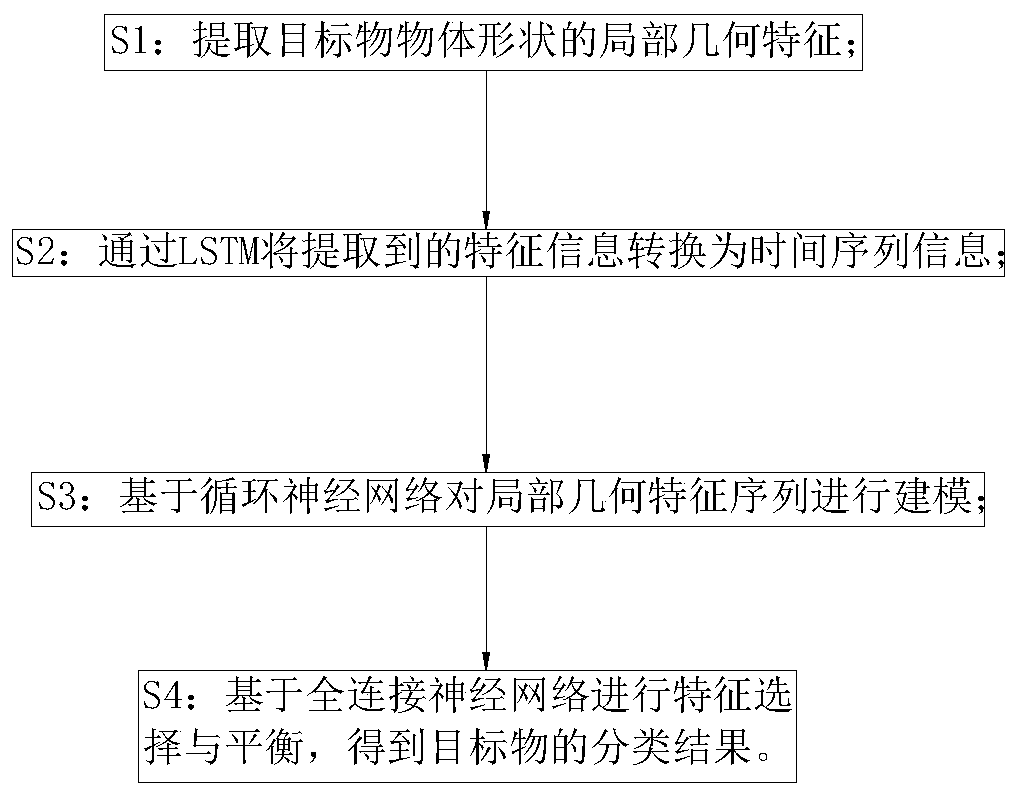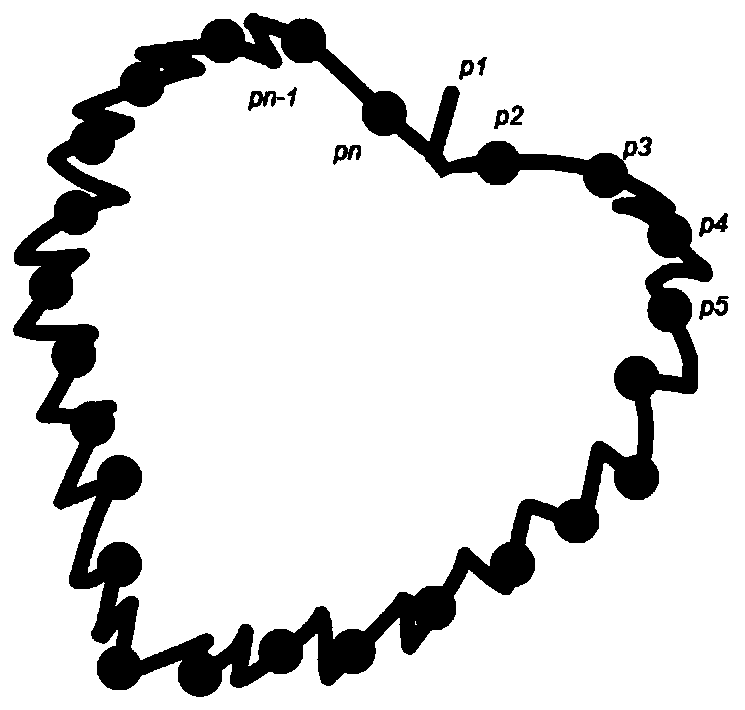Two-dimensional contour shape recognition and classification method based on local geometrical characteristic sequence modeling
A technology of local geometric features and two-dimensional contours, applied in character and pattern recognition, computer components, biological neural network models, etc., to achieve the effect of improving the success rate
- Summary
- Abstract
- Description
- Claims
- Application Information
AI Technical Summary
Problems solved by technology
Method used
Image
Examples
Embodiment
[0045] Embodiment: two-dimensional contour shape recognition classification method based on local geometric feature sequence modeling, such as figure 1 shown, including the following steps:
[0046] (1) Extract the local geometric features of the target object shape.
[0047] Such as figure 2 As shown, the two-dimensional contour shape of an object is usually composed of contour lines, points and curves, which is a sparse structure. Therefore, in the deep learning framework, the shape context is adopted to describe the local shape features on the contour of the image, and there is no need to perform a sliding convolution kernel on the entire image.
[0048] Such as image 3 As shown, for the two-dimensional contour shape of the target, by equidistantly collecting n points on the contour, it is recorded as P={p 1 ,p 2 ,p 3 ,...p n}, image 3 Midpoints represent sampling points along the contour.
[0049] Such as Figure 4-6 As shown, at each sampling point p i At , ...
PUM
 Login to View More
Login to View More Abstract
Description
Claims
Application Information
 Login to View More
Login to View More - Generate Ideas
- Intellectual Property
- Life Sciences
- Materials
- Tech Scout
- Unparalleled Data Quality
- Higher Quality Content
- 60% Fewer Hallucinations
Browse by: Latest US Patents, China's latest patents, Technical Efficacy Thesaurus, Application Domain, Technology Topic, Popular Technical Reports.
© 2025 PatSnap. All rights reserved.Legal|Privacy policy|Modern Slavery Act Transparency Statement|Sitemap|About US| Contact US: help@patsnap.com



